|
|
|
Sort Order |
|
|
|
Items / Page
|
|
|
|
|
|
|
| Srl | Item |
| 1 |
ID:
152355
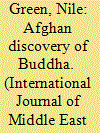

|
|
|
|
|
| Summary/Abstract |
Through their interactions with French archaeologists from around 1930, Afghan historians formulated a new official historical identity for Afghanistan based on its pre-Islamic past. This article provides the first analysis of this process by tracing the emergence of the new historiography through the career of its chief promoter, Ahmad ʿAli Kuhzad, as curator of the National Museum (founded 1931) and director of the Afghan Historical Society (founded 1942). Through placing Kuhzad in these official institutional settings and reading his major works, the article shows how traditional Persianate historiography was challenged by an imported and amended version of world civilizational history. In the decades after independence in 1919, this new historical vision allowed the young Afghan nation-state to stake its civilizational claims on an international stage. In these previously unexcavated historiographical strata lie the roots of the Taliban's iconoclasm, which are revealed as a dialogical response to the state cultural institutions that remade Afghanistan as Aryana.
|
|
|
|
|
|
|
|
|
|
|
|
|
|
|
|
| 2 |
ID:
190993
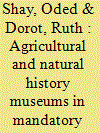

|
|
|
|
|
| Summary/Abstract |
The establishment of agricultural and natural history museums in Jerusalem (1920) and Tel Aviv (1925) by individual and institutional Jewish entrepreneurs was a corollary of the wave of exhibitions and fairs in Western countries that swept across Mandatory Palestine’s Jewish community (Yishuv) in the 1920s. Yet it also reflected Zionist ideals and perceptions and as such served as a catalyst for providing modern agricultural education to the Yishuv’s urban classes.
|
|
|
|
|
|
|
|
|
|
|
|
|
|
|
|
| 3 |
ID:
190958


|
|
|
|
|
| Summary/Abstract |
This article foregrounds the postcolonial museum as a new source, and site, from which to write South Asian histories of partition and its aftermath. It focuses on collecting practices in India within East Punjab, following the partition of the British-era Punjab province in 1947 between India and Pakistan. Tapping hitherto-unused archival sources, it reveals the considerable financial investment and drive to collect at this time, belying the idea of museums being ‘dead’ colonial assets, and demonstrates their centrality to how citizenship and belonging were articulated (or withheld) in independent India. Some discoveries have far-reaching implications for both historians and museum professionals. The article also shines a light upon a new range of actors—both named and nameless, professional and citizen—who have been marginal to historical enquiry thus far. Moving beyond the familiar colonial templates within which museums in the region have until now been studied, it asks critical questions of the postcolonial museum in South Asia by interrogating the relationship between collections, and the Indian nation-state and its subsidiaries.
|
|
|
|
|
|
|
|
|
|
|
|
|
|
|
|
| 4 |
ID:
106040
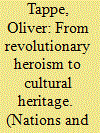

|
|
|
|
|
| Publication |
2011.
|
| Summary/Abstract |
Museum exhibitions in Laos represent two main strands of Lao national identity discourse. First, they glorify the 'liberation struggle' of the so-called 'Lao multiethnic people' under the leadership of the Lao People's Revolutionary Party, and therefore serve as important ideological tools for the current regime's self-legitimisation. Second, they display the history and cultural heritage of the Lao nation, providing the postcolonial state with a narrative of historical continuity and civilisation that is focused mostly on the dominant ethnic Lao culture. This article explores the contradictions within official images of the Lao nation-state and how these opposing strands of national identity compete or interact. Museums as key arenas of ideological tensions constitute illuminating fields of research on discourses of national identity in Laos.
|
|
|
|
|
|
|
|
|
|
|
|
|
|
|
|
| 5 |
ID:
172341


|
|
|
|
|
| Summary/Abstract |
This article proposes a method for analysing museums as sites of intimate and colonially-produced international relations. Beginning with fieldwork that approaches museums as sites through which people intimately encounter the objects, institutions, selves and others of international politics, we explore how intimacy can be ‘read’ as socio-sexual affect, scales and proximities, and colonial differentiation/racialisation. The article is grounded in fieldwork at the British Army Royal Engineers Museum in Kent, UK, conceptualised as an assembly of, following Stoler, imperial debris. We explore how certain museum exhibits work as intimate ‘organising objects’, locating the museum collection, and those who visit or are excluded from it, within the intimate circulations of imperial and colonial violence. The article makes two core contributions: first, responding to recent literature in IR on museums we propose a framework for understanding how museums and exhibitions function as everyday sites of coloniality and racialisation. Second, we propose that approaching intimacy as a method is instructive for fieldwork in international relations (including museums) which takes the colonial constitution of the global/local seriously.
|
|
|
|
|
|
|
|
|
|
|
|
|
|
|
|
| 6 |
ID:
177529
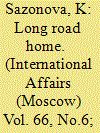

|
|
|
|
|
| Summary/Abstract |
THE COLONIAL EPOCH not only shaped history, geography, the system of international relations but also and to a great extent, distribution of cultural valuables on the planet. In its colonial rage, Western Europe was capturing territories across the world which explains why the treasure troves of the biggest European museums look very impressive at the expense of cultural valuables brought from other continents.
|
|
|
|
|
|
|
|
|
|
|
|
|
|
|
|
| 7 |
ID:
151743
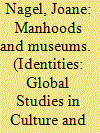

|
|
|
|
|
| Summary/Abstract |
Peggy Levitt’s Artifacts and Allegiances led me to recollect some of the displays of national identity and culture that I have seen in US museums over the years. The Dwight D. Eisenhower Presidential Museum in Abilene, Kansas traces Eisenhower from his modest boyhood in small-town Kansas to the helm of a victorious military in the Second World War to his Presidency of a triumphant superpower after the war. At the Eisenhower museum there is a seamless optimism linking the local and the global
|
|
|
|
|
|
|
|
|
|
|
|
|
|
|
|
| 8 |
ID:
151744
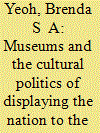

|
|
|
|
|
| Summary/Abstract |
Focusing on the way nationalist imperatives and cosmopolitan ambitions fold into each other in the making of museum spaces in seven cities across the globe, Artifacts and Allegiances provides an intriguing comparative narrative of museum practices which takes into account the broader differences in social, demographic and historical contexts. Based primarily on interviews with museum professionals, academics and policymakers, the approach favours the production of meanings and representations from above, as opposed to the telling of stories from below. A consideration of multiple readings, appropriations and contestations across different scales would afford us a more dynamic view of the cultural politics that animate the ways in which museums display the nation to the world and draw the world into the nation.
|
|
|
|
|
|
|
|
|
|
|
|
|
|
|
|
| 9 |
ID:
178361
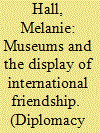

|
|
|
|
|
| Summary/Abstract |
It is generally recognised that towards the end of the nineteenth century the Anglo-American relationship entered a new phase characterised by friendship-building initiatives. However, as American businesses sought to expand into the British Empire’s markets, that enterprise required trust more than friendship. This article captures an overlooked aspect of Ambassador Bayard’s cultural diplomacy, one that sought to build trust for American products and services by harnessing American philanthropy notably through his and other prominent Americans’ engagement with the Carlyle House Memorial Museum in the Empire’s capital. Simultaneously, Bayard’s engagement with the museum celebrated America’s endorsement of international copyright legislation. It argues that Thomas Carlyle’s views, together with his friendship with Ralph Waldo Emerson, made the museum-making initiative particularly suited to such purposes. At Carlyle’s House, a thriving group of American ex–patriots and tourists could associate the friendship of the two authors with ‘higher’ ideals of a ‘civilisation’ held in trust.
|
|
|
|
|
|
|
|
|
|
|
|
|
|
|
|
| 10 |
ID:
151738
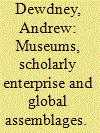

|
|
|
|
|
| Summary/Abstract |
This discussion of ‘Artifacts and Allegiances: how museums put the nation and the world on display’ by Peggy Levitt shows the efficacy of the cosmopolitan–national continuum as an analysis of the conditions of museums in a globalized world. It suggests that nationalism and cosmopolitanism, whilst posed as alternatives, are not seriously in tension within the liberal global museum. It finds that the book is useful in proposing the museum as a complex cultural assemblage, but that the lack of theoretical integration into the body of the narrative limits the scope for examination of what is entailed. The review suggests that a new progressive discourse of the museum of the 21st century would need to consider and include the participation and engagement of the museum’s audiences, both present and online.
|
|
|
|
|
|
|
|
|
|
|
|
|
|
|
|
| 11 |
ID:
151741
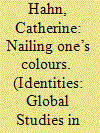

|
|
|
|
|
| Summary/Abstract |
Taking the view that national art museums should represent the multifarious populations they serve, this article explores racial material in Tate Britain’s high-profile exhibition Artist and Empire: Facing Britain’s Imperial Past (2015). The exhibition gave extensive coverage to two aspects of empire: hybrid fusions and the myth of white heroism, but gave limited attention to colonization as a maximally coercive system built on racist imaginings and abuse. Through cross-examination of the exhibition’s content and absences, I explore whether Tate Britain is setting out the ‘building blocks’ for more diverse practice.
|
|
|
|
|
|
|
|
|
|
|
|
|
|
|
|
| 12 |
ID:
164398
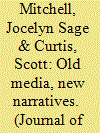

|
|
|
|
|
| Summary/Abstract |
In 1959, a Danish anthropological expedition to Qatar created hundreds of photographs and a 16-minute film depicting the diversity of Qatari lifestyles, which included strong evidence of a Bedouin past, separate from the merchant and pearl-diving culture of the coast. However, Qatar’s new national museum, still under development, has been working on a different narrative: a more unified national identity that emphasizes the similarities of Qatari heritage rather than the differences. Artifacts such as these photos and film can become inconvenient when they do not fit new and improved civic myths, yet as some of the most important (and well known) surviving images of Qatar’s heritage, this evidence cannot be left out. How might the museum make use of the evidence so that it aligns with its narrative? Here we focus on the aesthetic style of Jette Bang’s photographs and film, which emphasizes the warmth, hospitality, and universal humanity of Qatari heritage. Our argument connects the historical and ideological contexts for both the new national museum’s push for a unity narrative and Bang’s 1959 photographs and film. We suggest that the artistic elements of these ostensibly scientific and historical artifacts may offer Qatar’s new museum a way to repurpose them without jeopardizing a narrative of national unity.
|
|
|
|
|
|
|
|
|
|
|
|
|
|
|
|
| 13 |
ID:
151745
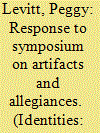

|
|
|
|
|
| Summary/Abstract |
The author responds to the contributions to this symposium, highlighting her ideas about diversity management regimes, the urban cultural armature, global museum assemblages, the cosmopolitan-nationalism continuum, and new methods for studying the global and for engaging in constructive critique.
|
|
|
|
|
|
|
|
|
|
|
|
|
|
|
|
| 14 |
ID:
184134
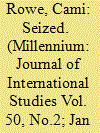

|
|
|
|
|
| Summary/Abstract |
This article examines representations of border security within public museums, through the example of the UK Border Force National Museum. It begins by discussing the way that international borders are theatrically experienced, and the parallel characteristics of museum spaces. I then suggest the value of performance autoethnography when analysing such phenomena, which arises from the ability to creatively situate personal experience alongside institutional scripts of border control. The article then presents a performance autoethnography that illustrates my experiences within the Border Force Museum. This provides new insights into the theatrical framing of the museum and its effect on visitor interpretations. The article demonstrates that the Border Force Museum replicates the theatricality of border control sites, and thus supports the ordering of bodies into insiders and outsiders; however, creative methods for knowledge production might offer a means of challenging existing border taxonomies, especially when personal experience is circulated through theatrical means.
|
|
|
|
|
|
|
|
|
|
|
|
|
|
|
|
| 15 |
ID:
192996


|
|
|
|
|
| Summary/Abstract |
This paper examines the Pahlavi Dynasty Museum, which was inaugurated in 1976 during the celebrations marking the fiftieth anniversary of Pahlavi rule. Built inside the Marble Palace, the shah's former residence in the center of Tehran, the museum was intended to memorialize the achievements of the Pahlavis, presenting the official Pahlavi version of Iran's modern history. The museum was unique in many respects, not least because it was the only former Pahlavi palace that had been converted into a museum to honor the Pahlavis, but it shared the objectives of other museums constructed during this period. During the late Pahlavi era, a major aspect of the state's cultural policy was to sponsor initiatives that strengthened the official state narrative, which argued that the Pahlavis were the legitimate heirs of a 2500-year-old monarchical tradition. The article explores how the state attempted to express these narratives through the museum's design and exhibits.
|
|
|
|
|
|
|
|
|
|
|
|
|
|
|
|
| 16 |
ID:
129001
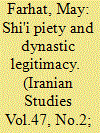

|
|
|
|
|
| Publication |
2014.
|
| Summary/Abstract |
Mashhad, the site in northeastern Iran of the shrine of the eighth Shi?i imam, is arguably one of the largest and wealthiest sacred shrines in the world. The gilded dome over the imam's mausoleum stands amidst an expansive complex of courts, monumental gateways, libraries, museums, guesthouses, and administrative offices that cater to thousands of pilgrims each year. This paper examines the period, under the aegis of the early Safavid shahs, when Mashhad was established as the preeminent Shi?i pilgrimage center in Iran. Appropriating the Timurid ecumenical vision for the shrine, the Safavid shahs refashioned the holy city into a site that celebrated the triumph of Twelver Shi?ism in the Safavid realm and reinforced Safavid claims of legitimacy. While highlighting Shah Tahmasb's personal devotion to Mashhad, and his privileging of the shrine within Safavid sacred topography, the paper focuses on Shah ?Abbas's urban reshaping of Mashhad and the architectural and institutional expansion of the shrine during his reign, thereby enhancing its status as the leading spiritual center in the Safavid empire.
|
|
|
|
|
|
|
|
|
|
|
|
|
|
|
|
| 17 |
ID:
101258
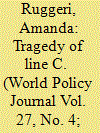

|
|
|
| 18 |
ID:
126359


|
|
|
|
|
| Publication |
2013.
|
| Summary/Abstract |
This article looks at how the major national (or pseudo-national) historical museums in China and Taiwan interpret and display very different "new rememberings" of Japan. The main focus is on the permanent exhibitions of the modern history wing of the National Museum of China (NMC; formerly the Museum of the Chinese Revolution), which finally reopened in 2011 after almost a decade of refurbishment, and of the National Museum of Taiwan History (NMTH), which opened in the same year. It discusses how museum portrayals of Japan reflect divergent public discourses on national identity. Through examining the relationship between museums and the apparatus of the Chinese state (ROC and PRC), the first section locates the NMC and NMTH in their bureaucratic and political contexts. A typology of approaches to the construction of national identity is then offered, considering the implications of different conceptions of identity for portrayals of Japan and its relationship with China or Taiwan. The remainder of the article looks in turn at the NMC and NMTH, outlining the history of each before examining how Japan is represented in their permanent exhibitions. It concludes by considering what can be learnt from this about the evolving relationship between official historical discourse and the broader political context on both sides of the Taiwan Strait.
|
|
|
|
|
|
|
|
|
|
|
|
|
|
|
|
| 19 |
ID:
151737
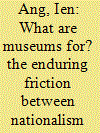

|
|
|
|
|
| Summary/Abstract |
This response to Peggy Levitt’s book Artifacts and Allegiances argues that, as cultural institutions, museums are too deeply embedded within the nation state to be able to present cosmopolitan narratives that go beyond the biased particularities of the nation. Rather than conceiving nationalism and cosmopolitanism as a continuum, the relationship between the two should be seen as one of enduring friction, creating a major challenge for museums around the world to tell stories suited for our mobile, global times.
|
|
|
|
|
|
|
|
|
|
|
|
|
|
|
|
|
|
|
|
|